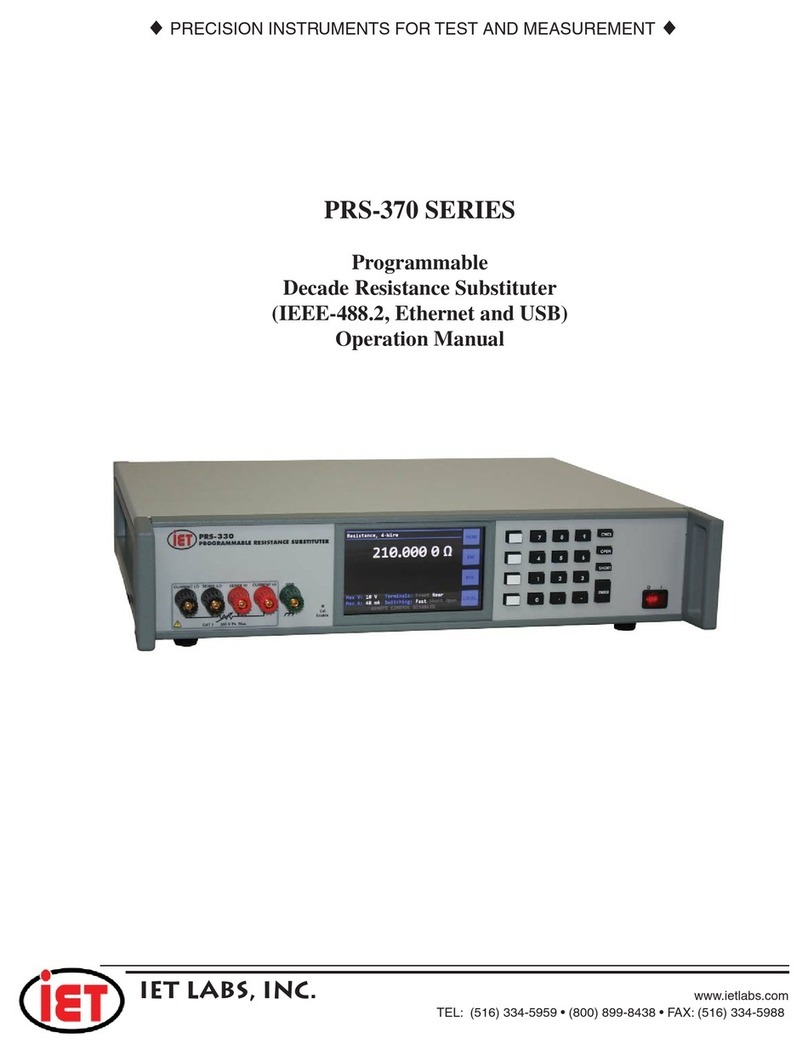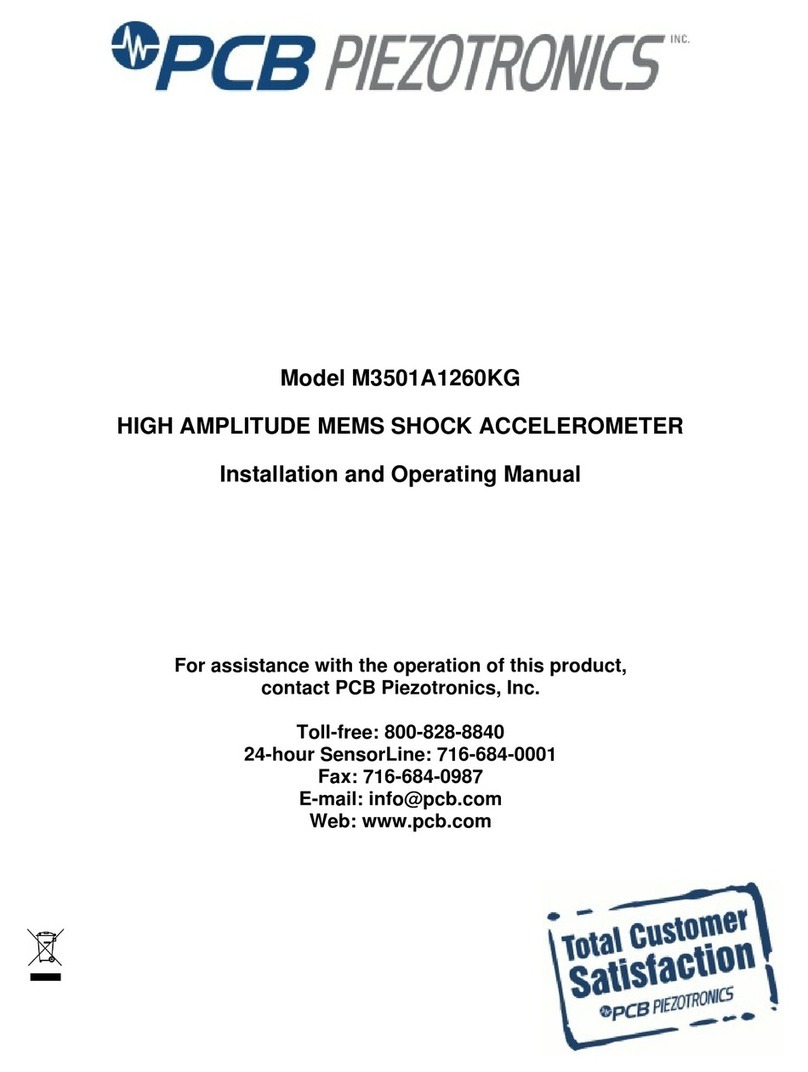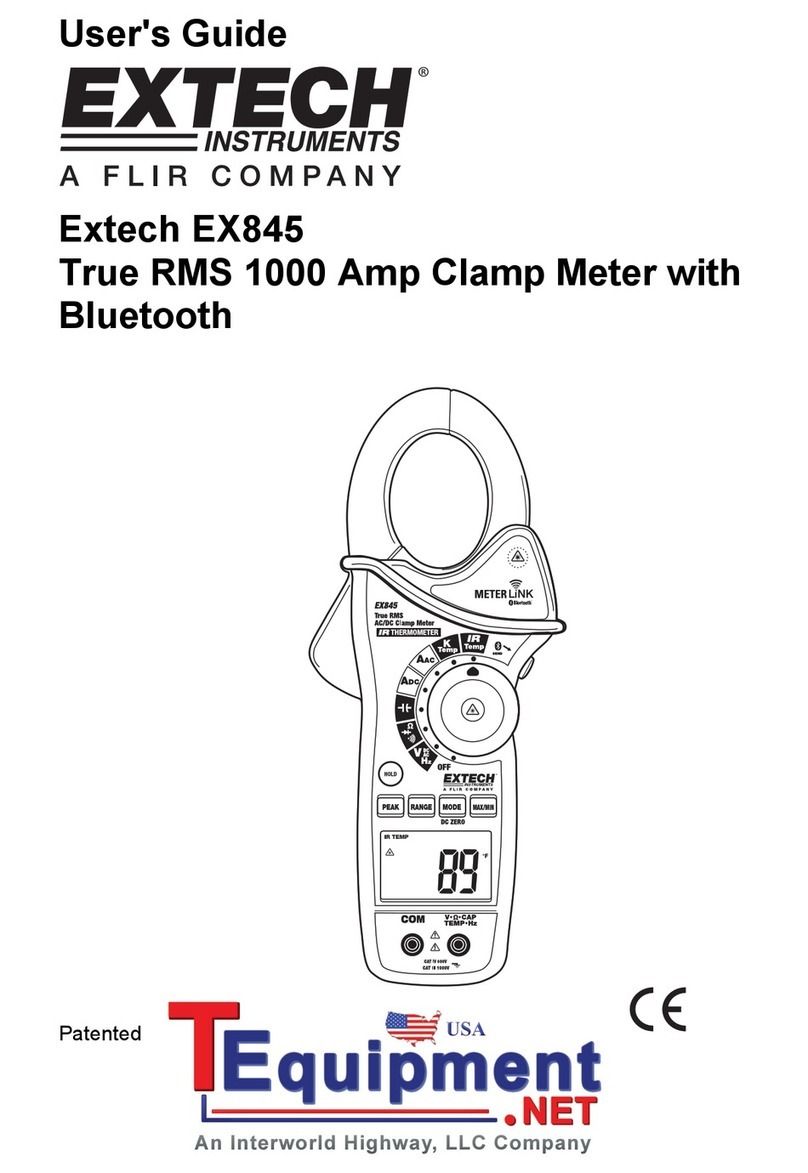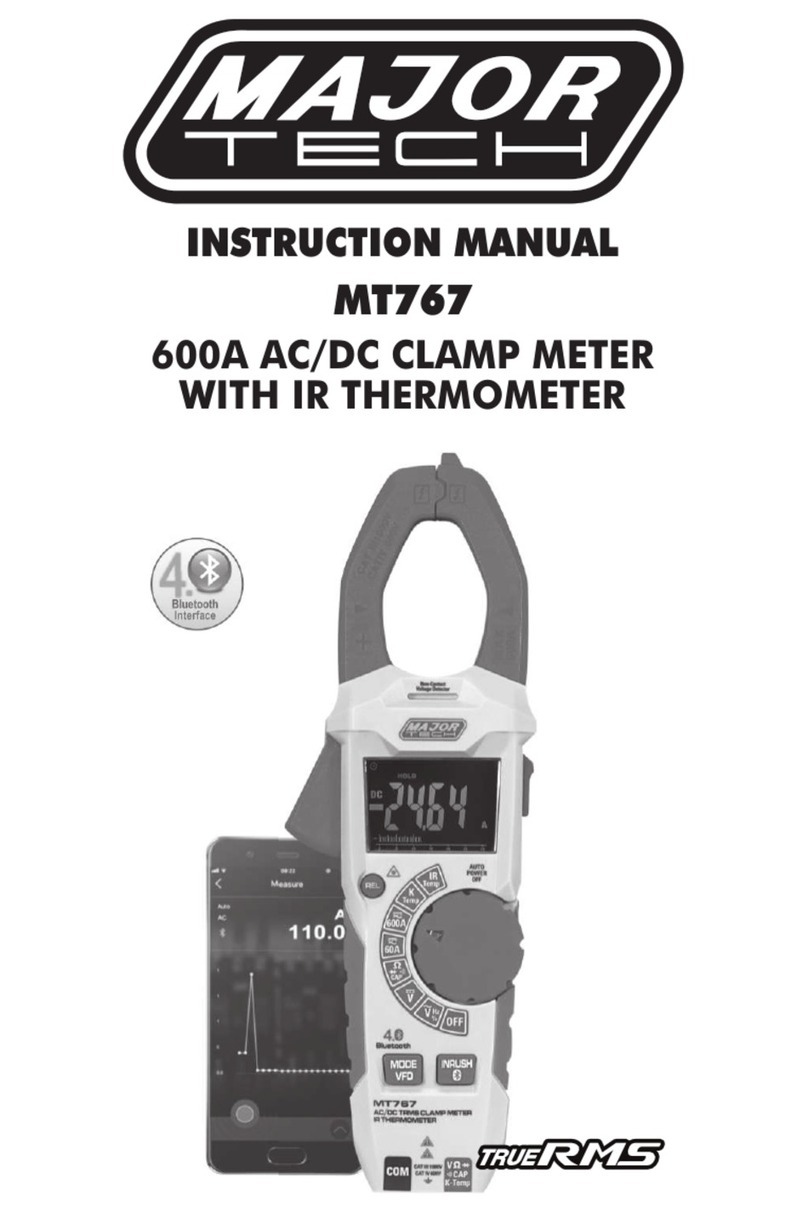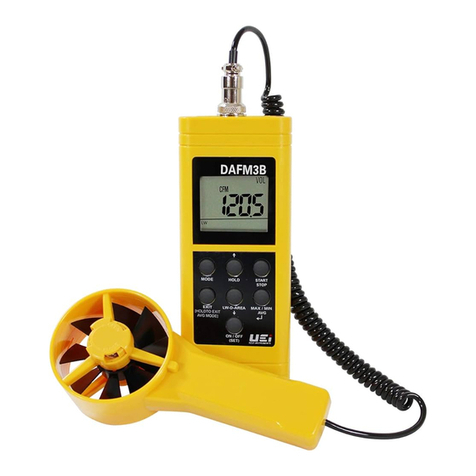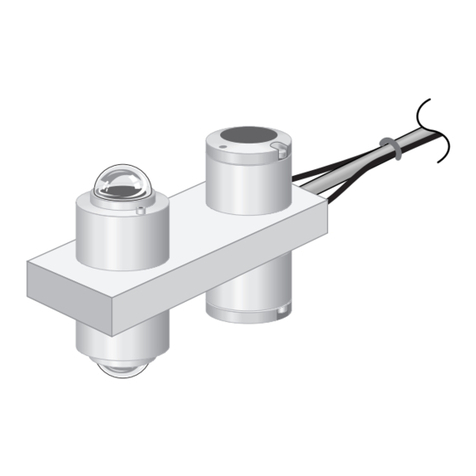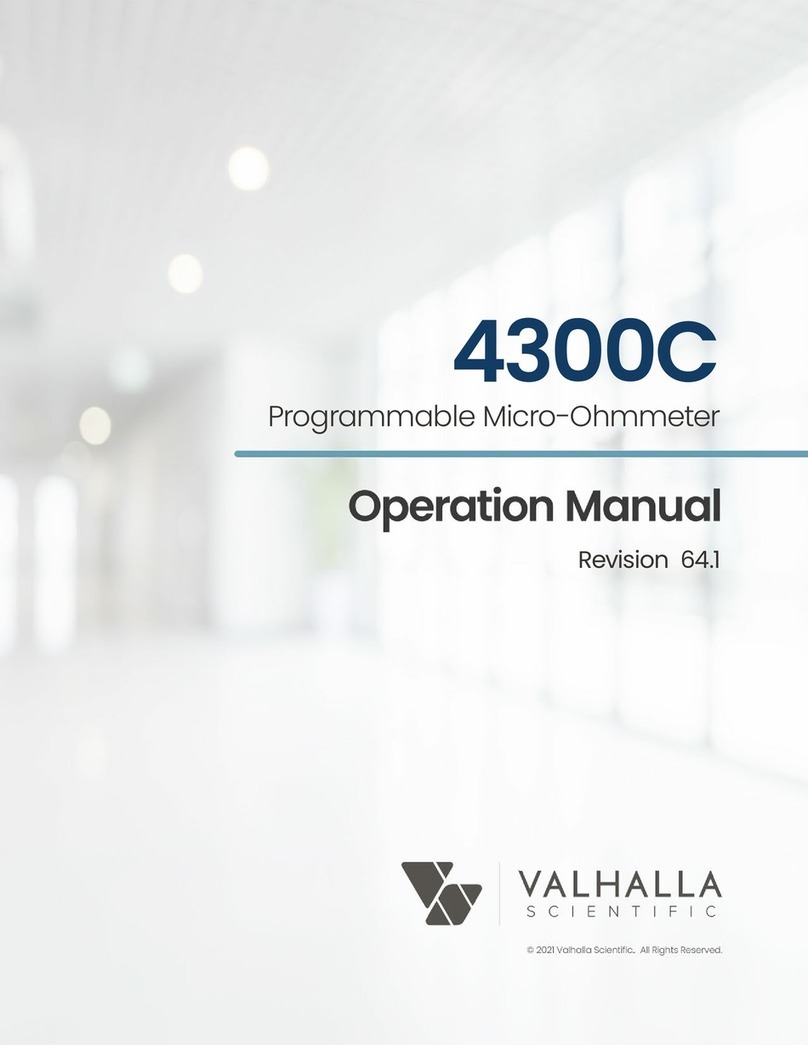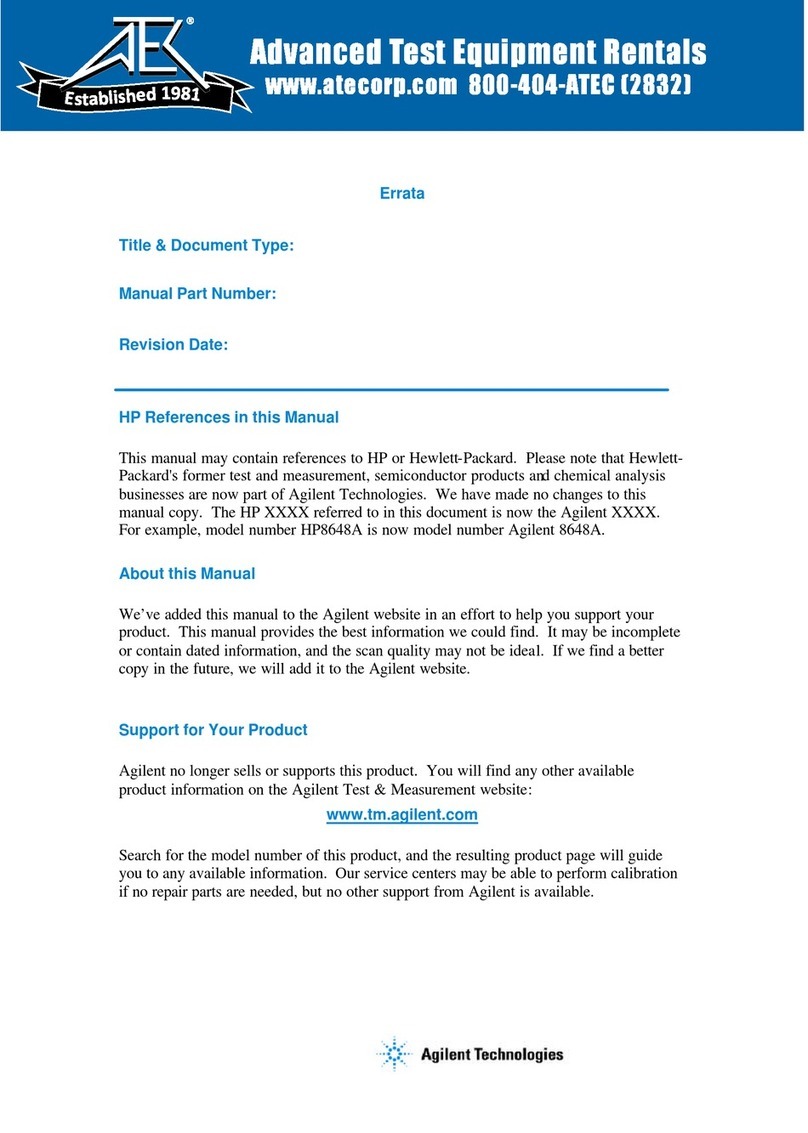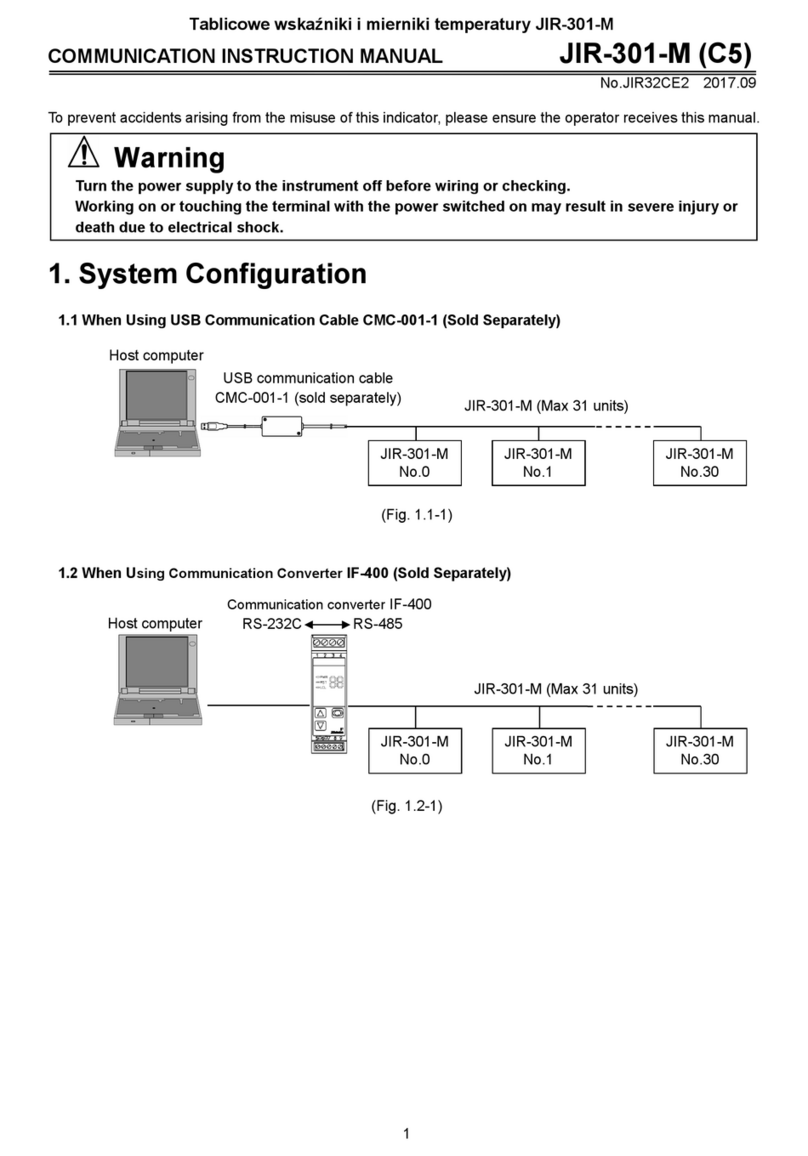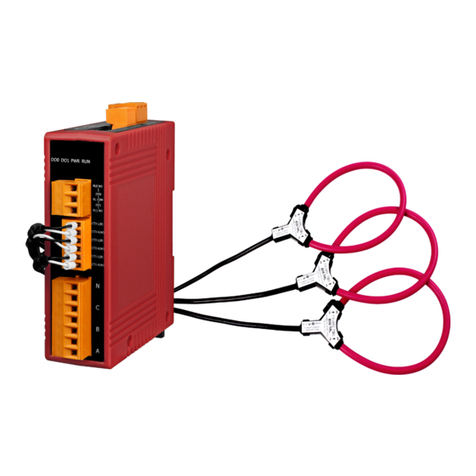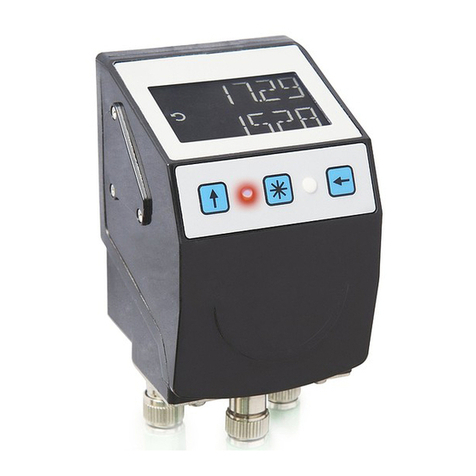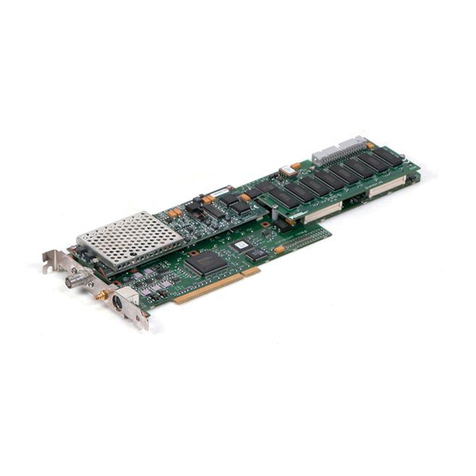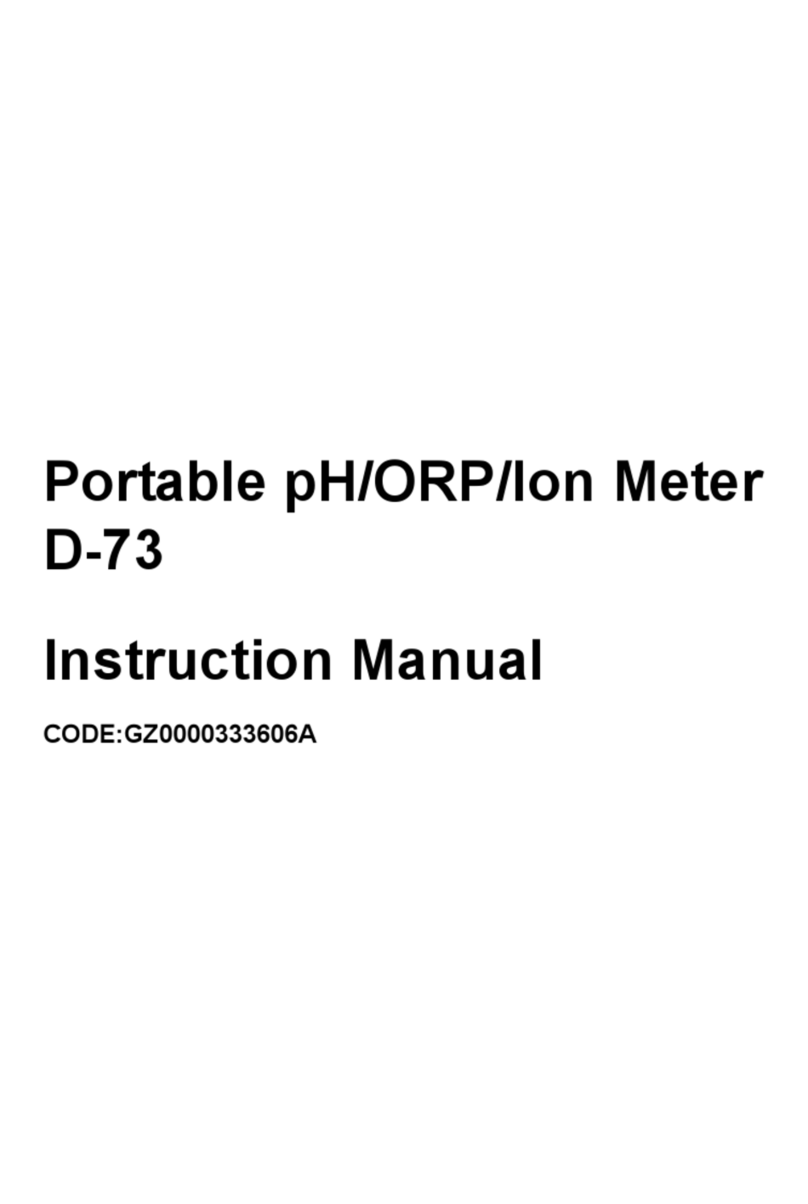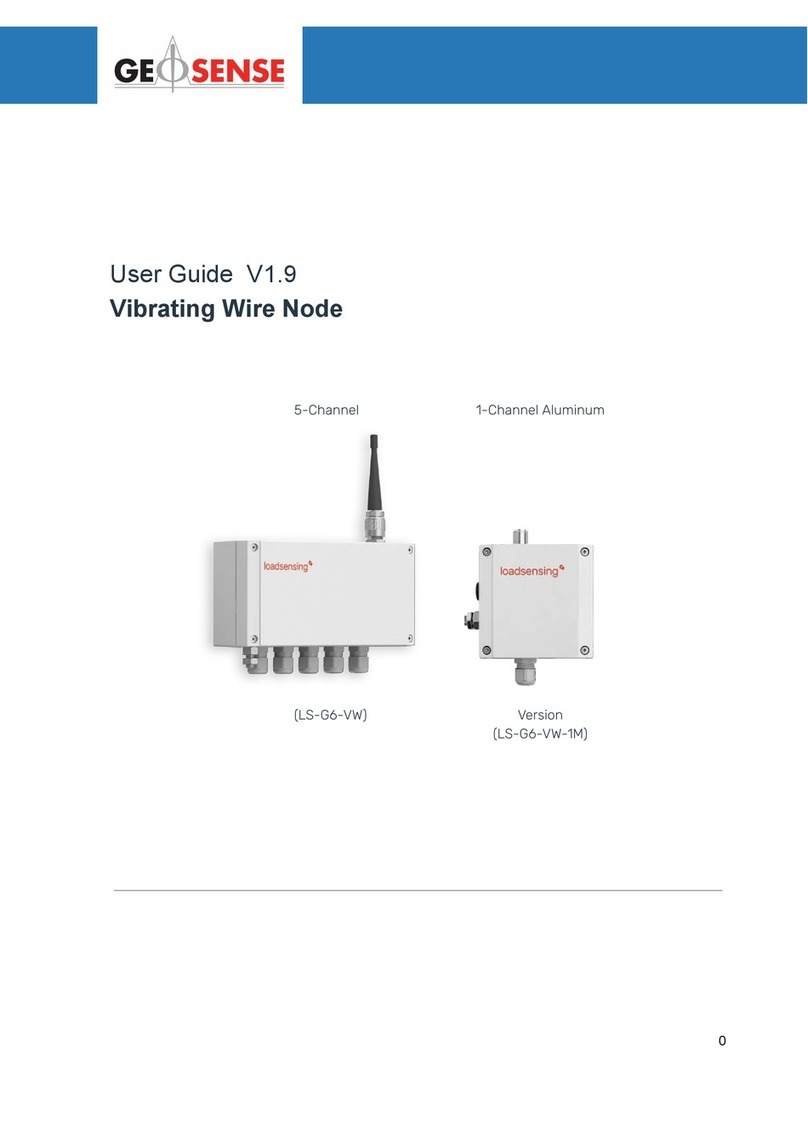IET Labs PRS-202 Series User manual

♦PRECISION INSTRUMENTS FOR TEST AND MEASUREMENT ♦
TEL: (516) 334-5959 • (800) 899-8438 • FAX: (516) 334-5988
www.ietlabs.com
534 Main Street, Westbury, NY 11590
IET LABS, INC.
PRS-202 SERIES
High Precision
Manual or SCPI Programmable
Decade Resistance Substituters
Operation Manual
Copyright 2002 IET Labs, Inc.
PRS202 IEEE.2 im/October, 2002


CONTENTS
WARRANTY.......................................................................................................... i
WARNING ............................................................................................................ ii
CAUTION ............................................................................................................. ii
CONTENTS......................................................................................................... iii
FIGURES............................................................................................................. iv
TABLES............................................................................................................... iv
Chapter 1: INTRODUCTION ............................................................................... 1
Chapter 2: SPECIFICATIONS............................................................................. 3
2.1 Model Configuration and specifications ........................................................................ 3
2.2 General specifications ................................................................................................... 4
Chapter 3: OPERATION...................................................................................... 6
3.1 Initial inspection and setup ............................................................................................ 6
3.2 Connection .................................................................................................................... 6
3.2.1 General Considerations ................................................................................. 6
3.2.2 Electrical Considerations ............................................................................... 6
3.2.3 Four-Wire Kelvin Lead Connections............................................................. 6
3.2.4 Thermal emf Considerations ......................................................................... 6
3.3 Dial Setting .................................................................................................................... 7
3.4 Environmental Conditions ............................................................................................. 7
3.5 Local Operation ............................................................................................................ 7
3.6 Remote Operation ......................................................................................................... 7
Chapter 4: BCD INTERFACE OPTION .............................................................. 8
4.1 BCD Programming ....................................................................................................... 8
Chapter 5: IEEE INTERFACE OPTION ............................................................ 10
5.1 Introduction ................................................................................................................. 10
5.2 Capabilities .................................................................................................................. 10
5.3 Address Switch and Communications Settings ........................................................... 10
5.4 IEEE Option Operation ............................................................................................... 10
Chapter 6: SERIAL INTERFACE OPTION ....................................................... 11
6.1 Introduction .................................................................................................................. 11
6.2 Capabilities ................................................................................................................... 11
6.3 Signal Interface and Communications Settings ............................................................ 11
6.4 SERIAL Option Operation ........................................................................................... 11

Figures
Figure 1.1 PRS 202 Series High Precision Manual or Programmable
Decade Resistance Substituter ............................................................................ 1
FIGURE 2.1 Typical OPERATING GUIDEAffixed to Unit ...................................... 5
Tables
Table 3.1 BCD INPUT Connector ........................................................................... 8
Table 3.2 BCD INPUT Connector PinAssignments .................................................. 9
Table 4.1 Bus Address Switch Settings ............................................................................10
Chapter 7: PROGRAMMING ............................................................................ 12
7.1 Introduction ................................................................................................................. 12
7.2 Command String Structure .......................................................................................... 12
7.3 Advanced Programming - Software Drivers .............................................................. 13
7.3.1 Determining the PRS Configuration ............................................................ 13
7.3.2 Instrument Initialization ............................................................................... 13
7.3.3 Source Impedance ...................................................................................... 14
Chapter 8: MAINTENANCE .............................................................................. 15
8.1 Verification of Performance ....................................................................................... 15
8.1.1 Calibration Interval ...................................................................................... 15
8.1.2 General Considerations ............................................................................... 15
Appendix A ........................................................................................................ 16
SCPI Command Reference .............................................................................................. 16
Appendix B ........................................................................................................ 18
IEEE-488.2 Common Commands ..................................................................................... 18

WARNING
OBSERVE ALL SAFETY RULES
WHEN WORKING WITH HIGH VOLTAGES OR LINE VOLTAGES.
Dangerous voltages may be present inside this instrument. Do not open the case
Refer servicing to qulified personnel
HIGH VOLTAGES MAY BE PRESENT AT THE TERMINALS OF THIS INSTRUMENT
WHENEVER HAZARDOUS VOLTAGES (> 45 V) ARE USED, TAKE ALL MEASURES TO
AVOID ACCIDENTAL CONTACT WITH ANY LIVE COMPONENTS.
USE MAXIMUM INSULATION AND MINIMIZE THE USE OF BARE
CONDUCTORS WHEN USING THIS INSTRUMENT.
Use extreme caution when working with bare conductors or bus bars.
WHEN WORKING WITH HIGH VOLTAGES, POST WARNING SIGNS AND
KEEP UNREQUIRED PERSONNEL SAFELY AWAY.
CAUTION
DO NOT APPLY ANY VOLTAGES OR CURRENTS TO THE TERMINALS OF THIS
INSTRUMENT IN EXCESS OF THE MAXIMUM LIMITS INDICATED ON
THE FRONT PANEL OR THE OPERATING GUIDE LABEL.
WARRANTY
We warrant that this product is free from defects in material and workmanship and, when properly used, will
perform in accordance with applicable IET specifications. If within one year after original shipment, it is found
not to meet this standard, it will be repaired or, at the option of IET, replaced at no charge when returned to IET.
Changes in this product not approved by IET or application of voltages or currents greater than those allowed by
the specifications shall void this warranty. IET shall not be liable for any indirect, special, or consequential
damages, even if notice has been given to the possibility of such damages.
THIS WARRANTY IS IN LIEU OF ALL OTHER WARRANTIES, EXPRESSED OR IMPLIED, INCLUD-
ING BUT NOT LIMITED TO, ANY IMPLIED WARRANTY OF MERCHANTIBILITY OR FITNESS FOR
ANY PARTICULAR PURPOSE.


1
INTRODUCTION
PRS-202 Series
Chapter 1
INTRODUCTION
The PRS-202 (Figure 1.1) Series is a broad line of
high precision manual and programmable decade
substituters. They provide straight resistance substi-
tution as well as RTD (Resistance Temperature De-
tector) simulation, in a wide selection of ranges, tol-
erances and ratings.
The PRS-202 substituter is a precision resistance
source with excellent characteristics of stability, tem-
perature coefficient, and power coefficient. High dy-
namic ranges are available, starting as low as 1 mΩ,
and extending to as many as 10 decades. These fea-
tures combined with a low virtually constant “zero
resistance” make for very versatile instruments.
The PRS-202 Series features two optional special
settings. An “open circuit” and a “short circuit”.
These modes are useful for obtaining reproducible
transitions between settings, i.e. break-before-make
or to short between settings. The “short circuit” set-
ting also provides a reduced zero resistance.
Operation is both local using convenient direct read-
ing front panel thumbwheel switches, and remote with
optional parallel BCD or IEEE-4888 interfaces. Both
can provide an optional extra “10” position for each
decade.
The PRS-202 Series employs very low resistance, low
thermal emf relays with gold clad silver alloy con-
tacts. A special design keeps contact resistance to a
minimum. The gold plating keeps the silver contacts
from becoming tarnished when unused, or when only
low currents are passed through them. This is most
often the case when only minute test currents are
drawn by digital multimeters and other test instru-
ments. Contact resistance remains low and repeat-
able.
High quality gold plated tellurium copper five-way
binding posts serve to minimize the thermal emf ef-
fects, which would artificially reflect a change in dc
resistance measurements. All other conductors within
the instrument, as well as the solder employed con-
tain no metals or junctions that could contribute to
thermal emf problems.
With a resolution as low as 1 mΩand a maximum
available resistance of over 100 MΩ, the PRS-202
Series may be used for exacting precision measure-
ment applications requiring high accuracy, good sta-
bility, and low zero resistance. They are suited for
automatic and manual calibration and testing, simu-
lation of RTD’S, programmable loads, and many other
laboratory and industrial applications.
The PRS-202 Series may be rack mounted to serve
as components in measurement and control systems.
Figure 1.1: High Precision Manual or
Programmable Decade Resistance Substituter

2INTRODUCTION
PRS-202 Series
This page is intentionally left blank.



SPECIFICATIONS
PRS-202Series
5
CAGE CODE: 62015 www.ietlabs.com
POWER: 110-125 V or 210-250 V; 50-60 Hz;
(internally switch selectable)
0.5 A fuse, 5x20 mm.
ResistanceType:Resistancewirefor 0.1Ωstepsandbelow;hermeticallysealed,wirewound,low-inductance
resistors for 1 Ωto 100 kΩsteps; precious metal-oxide film resistors for 1 MΩsteps and over.
Range: 0 to 99,999,999.9 Ω, with 0.1 Ωsteps.
Accuracy:±(0.05%+15mΩ), aftersubtractionofZero Resistance,4-terminal"true-ohm" measurement,at
23°C;traceable toNIST.
Zero Resistance: <140 mΩ, <100 mΩ, typical; add 20 mΩif OC (Open Circuit) option is present; <20 mΩ, with
SC (Short Circuit) option activated.
Drift after Warm-up: <±(75 ppm + 2 mΩ), true resistance drift; typically less.
Maximum Load: 3 A, or 200 V (dc + ac peak), or 0.5 Ω/step, or 4.5 Ωmaximum, whichever applies first.
Interface:IEEE-488.2-1987,SCPI1994.0;frontpanelswitchselectsREMOTE orLOCALoperation;
"*IDN" for S/N, Model & REV; "CAL:DATe?" for last calibration date
Terminals:Fourgold-platedtellurium-copperbindingpostsareprovidedforHIandLOterminalpairsforCURRENT
andSENSE.Thesebindingpostsvirtuallyeliminatethermalemfeffectsattheirjunctions.Oneadditionalbindingpost,
GND, is connected to the case, to chassis ground, and to earth ground.
MODEL: PRS-202W-IEEE.2
SN: G2-XXXXXXX
PRS-202 SERIES OPERATING GUIDE
CONSULT INSTRUCTION MANUAL FOR PROPER INSTRUMENT OPERATION
IET LABS, INC. • 534 Main Street, Westbury, NY 11590 • (516) 334-5959 • (800) 899-8438
PRS202BLBL/p31/PRS-202W-IEEE.2/10-16-02
Observe all safety rules when working with high voltages or line voltages.
ELECTRICALSHOCK HAZARD. DONOT OPEN CASE.
REFERSERVICINGTOQUALIFIEDPERSONNEL.
WARNING
FIGURE 2.1Typical OPERATING GUIDE Affixed to Unit

6
PRS-200Series
OPERATION
Chapter 3
OPERATION
The GND terminal on all models is connected to the
case and to earth and chassis grounds. This may be
used as a shield terminal.
3.2.2 Electrical Considerations
The performance of the PRS-202 is directly affected
by the quality of the connection to the system under
test. This is particularly true with the precision series
models equipped with higher accuracy, lower imped-
ance decade values.
For optimum performance, contact resistance should
be kept to a minimum using the most substantial mat-
ing connection practically possible, and assuring the
connection is well secured to the binding posts.
3.2.3 Four-Wire Kelvin Lead Connections
4-wire Kelvin leads minimize the effects of contact
resistance and approach ideal performance. The
CURRENT and SENSE HI/LO terminal pairs may
be shorted together to provide a 2-terminal load in
instances where high accuracy is not a concern.
3.2.4 Thermal emf Considerations
The PRS-202 Series uses high quality, low emf com-
ponents. Thermal emf is primarily attributable to the
temperature difference between the leads of the re-
lay and the contacts when temperature is applied to
the coil. This emf is of the order of 5 V per relay,
but is not usually additive. The typical worst case is
<15 µV.
3.1 Initial inspection and setup
This instrument was tested and carefully inspected
before shipment. It should be in proper electrical and
mechanical order upon receipt.
An OPERATING GUIDE is attached to the case
of the instrument to provide ready reference to speci-
fications.
Mount the unit in a standard 19" rack if the rack mount
option is specified.
3.2 Connection
3.2.1 General Considerations
The PRS-202 Series Decade unit is available in three
or five terminal versions. The binding posts are stan-
dard laboratory type and readily accept banana plugs,
telephone tips, spade lugs, alligator clips, and bare wire.
Binding posts are located on the front panel of the
instrument unless specifically ordered with a Rear
Output option.
The three terminal version posts are labeled HI, LO,
and GND. The HI and LO terminals are connected
to the ends of the internal impedance being set.
5 terminal models provide four Kelvin terminals con-
sisting of a CURRENT and a SENSE pair, each
labeled HI and LO. These minimize contact resis-
tance.

OPERATION
PRS-200Series
7
If the effect of tens of microvolts are significant to
your application, connect to the instrument with low
thermal emf materials only. Copper wire and copper
alloys are recommended, whereas brass and steel
should be avoided. Tinned copper and solder is ac-
ceptable.
This emf will not be reflected if an AC measurement
instrument is employed, and can be eliminated by us-
ing a meter with “True Ohm” capability. In other
cases, the emf may represent a very small compo-
nent of a DC resistance measurement.
3.3 Dial Setting
Each decade is manually controlled via a front panel
thumbwheel that provides positions for “0” through
“9”. The total impedance is set / read from the dial
setting in a direct fashion. The decimal point, if any,
is marked on the thumbwheel switches, and the steps
are clearly marked on the panel. Short Circuit / Open
Circuit mode control is only available using a Remote
control option.
3.4 Environmental Conditions
The PRS is built, calibrated and intended for use in a
laboratory environment with a nominal ambient tem-
perature near 23oC. The accuracy of the unit may be
affected when operated in non-laboratory environ-
ments.Always allow the instrument to stabilize to room
temperature after unpacking or relocating the instru-
ment. Humidity should be maintained at laboratory
conditions.
3.5 Local Operation
Operation of the PRS-202 substituter is straightfor-
ward and graphically represented on the front panel.
1. Turn on the POWER switch. The POWER
indicator lamp, if present, should come on.
If a REMOTE option is present, the
READY and LOCAL indicators should il-
luminate.
2. Set the REMOTE/LOCAL switch to LO-
CAL.
3. Connect any desired instrumentation to the
front panel binding posts. The GND termi-
nal may be connected to the ground of ex-
ternal equipment. The GND terminal is con-
nected to the case and to both chassis and
earth grounds.
4. Make 4-terminal or 2-terminal connections
as described previously. A shielded set of
cables is recommended whenever AC op-
eration is involved.
5. Set the thumbwheel switches to provide the
actual desired impedance in the actual units
indicated on the front panel.
3.6 Remote Operation
The PRS includes a REMOTE/LOCAL switch on
the front panel. The REMOTE position is a remote
enable. When in LOCAL mode, the PRS supplies
the impedance value selected using the front panel
thumbwheel switches.
When the switch is in the REMOTE position, the
PRS will supply the configured remote impedance
value only if that option asserts remote control. If
the option does not assert control, the front panel thum-
bwheel impedance value is supplied. The REMOTE
and LOCAL LEDs always indicate which interface
is controlling the impedance value.
Setting the front panel REMOTE/LOCAL switch
to LOCAL overrides the REMOTE option settings
and always sets the supplied impedance to the value
selected using the front panel thumbwheels, regard-
less of the REMOTE option’s assertion of control.
The REMOTE BCD option sets impedance values
and asserts control using TTL logic. The impedance
values are BCD encoded per table 4.2.
For IEEE and RS232 units, the LOCAL indicator
remains on until communication with the unit is initial-
ized. The mode changes to REMOTE after con-
troller commands are given.

8
PRS-200Series
BCDINTERFACEOPTION
Chapter 4
BCD INTERFACE OPTION
4.1 BCD Programming
All PRS-202 units come with a BCD (Binary Coded
Decimal 1-2-4-8 coding) remote programming capa-
bility accessed through the BCD INPUT connector
The connector is a 50-pin female parallel interface
industry standard connector found on the rear panel.
Table 3.1 gives the connector pin assignment view.
Table 3.2 gives the pin assignments for the BCD in-
put for this connector. There can be as many as 10
digits to be input. For any unit with fewer than 10
digits, only the implemented subset of these will be
operational. All other digits may be ignored, and the
associated pins may be left open or shorted to ground.
Once the unit is switched to REMOTE with the front
panel knob, it may be set to either LOCAL or RE-
MOTE, states under external control by properly se-
lecting pins 21 and 22 on the BCD INPUT rear panel
connector as shown in Table 3.1. Note that both pins
must be set. The REMOTE and LOCAL led’s will
respond accordingly. Once the PRS-202 is set into
Remote, the thumbwheel switches become disabled,
and impedance control is transferred to the rear panel
connector.
In addition, two special optional function pins are pro-
vided to set the unit in open circuit or (optional) short
circuit states across the HI and LO terminals on the
front panel. Applying a low to pin 34 activates an
open circuit condition. If the short circuit option is
present (this option provides a lower resistance short
circuit than a zero setting), applying a high to pin 35
provides a short circuit. If these functions are not
required, these two pins may be left open, or the op-
posite logic levels may be applied, i.e. high to pin 34
and low to pin 35. If both pins are activated, the
system will be in the short circuit mode. If the short
circuit option is not present, pin 20 may be left in any
state.
Table 4.1 BCD INPUT Connector
(Front View)
25 24 ……………. 21
50 49 ……………. 27 26

9
PRS-200Series
BCDINTERFACEOPTION
Table 4.2 BCD INPUT Connector Pin Assignments
Pin
No.
BCD Code
Wei
g
ht
Function
30 1
31 2
32 4 0.01-0.09Ω
33 8
43 1
42 2
41 4 0.1-0.9 Ω
16 8
39 1
38 2
37 4 l-9 Ω
36 8
47 1
46 2
45 4 10-90 Ω
44 8
41
32
2 4 100-900 Ω
18
81
72
64 1-9k
Ω
58
12 1
11 2
10 4 10-9O kΩ
98
16 1
15 2
14 4 100-900 kΩ
13 8
20 1
19 2
18 4 l-9 M Ω
17 8
29 1
28 2
27 4 10-90 M Ω
26 8
34 Open circuit control
35 Short circuit control
(o p t io nal)
23 Earth ground
24 +5V, l0 mA maximum
25 Earth ground
21 LOCA L/REM OTE select
22 LOCA L/REM OTE select
48 Reserved for IEEE-488
49 Reserved for IEEE-488
50 Reserved for IEEE-488
Low for LOCA L; High for REM OT E
Description
Low to activate; otherwise high or open.
H igh to activate; otherw ise low or op en; If op tion
is absent, pin may be in any state.
High for LOCAL; Low for REM OT E

10
PRS-200Series
IEEE INTERFACE OPTION
Chapter 5
IEEE INTERFACE OPTION
5.1 Introduction
The IEEE interface option makes the PRS-202 a
IEEE-488.2-1987 and SCPI 1994.0 compatible instru-
ment.
The IEEE STD 488.2 covers the electrical and me-
chanical bus specifications, and state diagrams for
each GPIB bus function. It also establishes data for-
mats, common commands for each 488.2 device and
controller protocols. The standard is available on-line
at http://www.ieee.org or by contacting the IEEE at:
IEEE Corporate Office
3 Park Avenue, 17th Floor
New York, New York
10016-5997 U.S.A.
Tel: +1 212 419 7900
The SCPI standard provides a tree like series of stan-
dard commands for programmable instruments so that
similar instruments by different manufacturers can
be controlled by the same program. SCPI informa-
tion and a command reference are located in Appen-
dix A.
5.2 Capabilities
The IEEE option provides remote control over all func-
tions except POWER.
5.3 Address Switch and
Communications Settings
Each GPIB bus device is identified by a five-bit bi-
nary address. There are 32 possible primary addresses
Decimal
Address
SWITCH
SETTINGS
5-4-3-2-1
Decimal
Address
SWITCH
SETTINGS
5-4-3-2-1
0 0-0-0-0-0 16 1-0-0-0-0
1 0-0-0-0-1 17 1-0-0-0-1
2 0-0-0-1-0 18 1-0-0-1-0
3 0-0-0-1-1 19 1-0-0-1-1
4 0-0-1-0-0 20 1-0-1-0-0
5 0-0-1-0-1 21 1-0-1-0-1
6 0-0-1-1-0 22 1-0-1-1-0
7 0-0-1-1-1 23 1-0-1-1-1
8 0-1-0-0-0 24 1-1-0-0-0
9 0-1-0-0-1 25 1-1-0-1-0
10 0-1-0-1-0 26 1-1-0-1-0
11 0-1-0-1-1 27 1-1-0-1-1
12 0-1-1-0-0 28 1-1-1-0-0
13 0-1-1-0-1 29 1-1-1-0-1
14 0-1-1-1-0 30 1-1-1-1-0
15 0-1-1-1-1 31 Reserved,
do not use
0 through 31; addresses 0 and 31 are reserved . The
PRS BUS ADDRESS switch on the rear panel es-
tablishes the GPIB address of the unit. Bus address
settings are read at power up. Refer to table 5.1.
5.4 IEEE Option Operation
The IEEE controller asserts remote mode upon re-
ceipt of a valid command. The REMOTE LED will
light and impedance settings will be controlled through
the IEEE interface if the REMOTE/LOCAL switch
is in the REMOTE position. Remote control may be
dropped by issuing an IEEE GTL command. Drop-
ping remote sets the PRS output to the value selected
via the front thumbwheel switches. See Chapter 3
for information about REMOTE/LOCAL function-
ality.
Table 5.1 IEEE Bus Address Settings

SERIAL INTERFACE OPTION
PRS-200Series
11
Chapter 6
SERIAL INTERFACE OPTION
IET Direction
Pin RS232 Signal Name
In / Out
1 AA Chassis n/a
2 BA SendData
3 BB ReceiveData
4 CA Requestto Send
5 CB Clearto Send
8 CF SignalDetected
20 CD DataTerminal Rdy
6.4 SERIAL Option Operation
The SERIAL option uses the same command set as
the IEEE option. Additional commands exist for con-
figuring the serial interface. Changes to the serial
UART take place at power-on or after a reset.
SCPI command strings must be followed by a <CR>
to terminate the message. Every command returns a
response that includes a message terminator. The pro-
gram/operator should wait for this message termina-
tor before sending additional commands.
Command characters are not echoed to the interface
on power up. Send <CTRL-E> to force the control-
ler to echo commands back to the interface and
<CTRL-F> to disable echo.
By default, the controller returns ">" and <LF> as a
prompt after executing any command. When Echo is
turned 'On', the controller returns <CR><LF> and
">"as a prompt after executing any command.
Echo-back RS232 Message
Mode Prompt Terminator
On CR LF > CR LF
Off >LF LF
6.1 Introduction
The SERIAL option adds RS232C and SCPI 1994.0
capability to the PRS-202 series instruments. The
SCPI standard provides a tree like series of standard
commands for programmable instruments so that simi-
lar instruments by different manufacturers can be con-
trolled by the same program. A PRS SCPI command
reference is included in Appendix A.
6.2 Capabilities
The SERIAL option provides remote control over all
functions except POWER.
6.3 Signal Interface and
Communications Settings
A 25 pin male DTE interface connector conforming
with EIA-STD-RS-530 is located on the rear-panel.
The default communications parameters are:
Connection of a PC to the PRS SERIAL option is
typically made through a simple null-modem or
“LapLink” cable.
Parameter Default Range/Choices
Baud 9600 300 - 115,200
Data Bits 8 7 or 8
Stop Bits 1 1 or 2
Parity 0 Odd, Even, None

12
PRS-200Series
PROGRAMMING
Chapter 7
PROGRAMMING
For example:
Value Command
600,567.9 ΩΩ
ΩΩ
ΩSOURce:DATA 000600567900
2,700,000 ΩΩ
ΩΩ
ΩSOURce:DATA 002700000000
Characters sent for decades not implemented are ig-
nored. Setting a PRS with 4 decades and a minimum
step size of 1,000 Ωto 10,600,567.9 would result in an
actual value of 600,000 Ω. For example:
Command Value
SOURce:DATA 010600567900 600,000 ΩΩ
ΩΩ
Ω
Optional OC and SC modes positioned at the first
character of the Resistance String. for the OC and
SC modes for a unit with a total of 7 decades and a
minimum step of 0.001 Ω are:
Open circuit SOURce:DATA 1YYYYXXXXXXX
Short circuit SOURce:DATA 2YYYYXXXXXXX
(where X = any decade value,
Y doesn’t matter, PRS not equipped)
OC and SC modes may be used to create a “con-
trolled transition” between two values without con-
cern for transitional switching of the relays.
• Output command for R1.
• Output command for R1 plus a SC Mode Character.
• Output command for R2 plus a SC Mode Character.
• Output command for R2.
This technique also applies to the OC mode.
OC/SC mode Character =
0, 4, 8, or absent for NORMAL operation
1, 5, or 9 for OPEN CIRCUIT operation -optional
2, 3, 6, or 7 for SHORTCIRCUIT operation -optional
7.1 Introduction
PRS-202 units equipped with IEEE or SERIAL op-
tions implement a consistent SCPI interface. A PRS
SCPI command reference is included in Appendix A.
7.2 Command String Structure
Output is controlled in the form of a single SCPI com-
mand followed by a space and a 12 character Resis-
tance String. The first character controls Open Cir-
cuit (OC) and Short Circuit (SC) modes in units
equipped with this feature.The remaining eleven char-
acters represent the value of each possible decade.
The Resistance String is constructed as:
•The number is in units of mΩ Ω
Ω Ω
Ω (0.001 Ω)Ω)
Ω)Ω)
Ω).
•All 12 characters must be provided; active characters are
those matching front panel thumbwheel decades.
•The decade values are straight-reading, from left to
right. All preceding and trailing zeros must be included
to complete 12 characters; any other characters in those
spaces will be ignored.
• A decimal point may not be included.
The Resistance String has a minimum step of 0.001
Ω assigned to the right-most character in the string.
To create the SCPI command:
• Multiply the desired value, in ohms, by 1,000
• Convert integer portion of value to a string,
• Prepend 0’s to create 12 character Resistance String
• Combine with “SOURce:DATA ” command.

PROGRAMMING
PRS-200Series
13
7.3 Advanced Programming -
Software Drivers
Basic control of a PRS can be automated by writing
a function that accepts a numeric value and converts
it to the string using the method described previously.
If the PRS is to be used in an automated environment
where various models and options may be installed or
where interchangeability is a requirement, a driver
can be written that abstracts the device specific func-
tions from the test sequence.
The PRS family of instruments are available in many
models (including inductance, resistance and capaci-
tance) ranges, (1milliOhm to 10MegaOhm) and with
various options. Information to create a more robust
driver to control a PRS instrument is listed below.
7.3.1 Determining the PRS Configuration
The IEEE 488.2 specification defines the *IDN string
as containing 4 sections separated by commas; the
manufacturer, the model, the serial number and the
revision of the instrument.
The Model section of the *IDN string of the PRS has
been encoded to provide information about the char-
acteristics of the specific instrument being used. For
example, a *IDN query to a PRS might return:
IET Labs,PRS-200-F-6-100m-0-0,D6-
0211201,D6
In our example above, the Manufacturer section con-
tains “IET Labs”, the Model section contains “PRS-
200-F-6-100m-0-0”, the Serial Number section “D6-
0211201” and the Revision section “D6”. The model
is split into 7 parts with dashes to identify:
Type
Version
Tolerance
Number of Decades
Least Significant Decade
Slot of LSD
Options
Type:
PRS Resistance Substituter
Version:
200
201
202
Tolerance:
X: 0.01%
Q: 0.02%
A: 0.05%
B: 0.1%
C: 0.5%
F: 1%
G: 2 %
H: 4%
LSD:
1m 1 milliOhm
10m 10 milliOhm
100m 100 milliOhm
1 1 Ohm
10 10 Ohm
100 100 Ohm
1K 1 KOhm
10K 10 KOhm
100K 100 KOhm
1M 1 MegaOhm
10M 10 MegaOhm
Note: micro and Mega Ohms use the same
suffix letter; case indicates magnitude.
Open Cicuit / Short Circuit Option:
0 not equipped
1 Open Circuit option present
2 Short Circuit option present
3 Both OC/SC present
7.3.2 Instrument Initialization
Reset the unit to power up defaults using *RST
Check that the instrument is “in cal” by reading the
calibration date and compare it to current date/time
using CALibrate:DATe?

14
PRS-200Series
PROGRAMMING
Read the IDN string from the PRS
Parse the IDN string to extract the IDN String Model
(second) section. Parse this further to determine:
let iType= type of device (R,L,C,RTD; enum 0-3)
let iModel = model (200,201,202; enum 0-2)
let iTol = tolerance (see section 7.3.1; enum 0-10)
let iDec = value of “Number of Decades”
let nMin = numeric value of LSD (see section 7.3.1)
let locLSD = location of the LSD on system board
let iOption = options installed (see section 7.3.1)
let iMax =(iMin*10**nDec)
Calculate iMax. In our example, the LSD is 100m or
0.1 Ohms and the number of decades is 6
iMax =(0.1*10**6)-iMin ; or iMax = 99,999.9
7.3.3 Source Impedance
Range test the desired output value against iMin and
iMax. Coerce the supplied value to the max or min,
return an error code, or use optionally equipped OC/
SC features per your needs.
Example 1:
let iModel = 0 (model 200/201 system board)
let iValue equal 123.51
iValue is < 99,999.9 and > 0.1;
therefore iValue = 123.51
Example 2:
let iModel = 1 (model 202 system board)
let iValue equal 1,000,000
iValue is > 99,999.9;
if iOption = 1 or 3 then iValue = 100,000.0
else iValue = 99,999.9
Multiply iValue by one over iMin to shift the digits
below the operating range of the PRS to the right of
the decimal point (in this case, 10). Select the integer
portion of iValue
Example 1:
iValue=iValue*(1/iMin)
iValue=123.51*(1/.1); or iValue = 1235.1
iValint=int(iValue); or iValint = 1235
Example 2:
iValue=iValue*(1/iMin)
iValue=100,000*(1/.1); or iValue= 1,000,000.0
iValint = int(iValue); or iValint = 1000000
Shift this value to align it with the location of the first
decade in the PRS. locLSD from our IDN string evalu-
ation is 1, so:
Example 1:
iValint = iValint * (1*10^(locLSD))
iValint = 1235 * (1*10^(0))
iValint = 1235 * 1; or iValue = 1235
Example 2:
iValint = iValint * (1*10^(locLSD))
iValint = 1000000 * (1*10^(0))
iValint = 1000000 * 1; or iValue = 1000000
Convert the number to a string value using a “for-
mat” function that includes leading zeros. A 200/201
series unit has 10 decade locations, a 202 has 12.
prsCmd = “SOURce:DATA ” _
& format(iValue,“0000000000”)
Example 1:
“SOURce:DATA 0000001235”
Example 2:
“SOURce:DATA 000001000000”
Send the prsCmd string to the PRS.
Table of contents
Other IET Labs Measuring Instrument manuals

IET Labs
IET Labs RS-925D Troubleshooting guide

IET Labs
IET Labs 1433 Series Troubleshooting guide
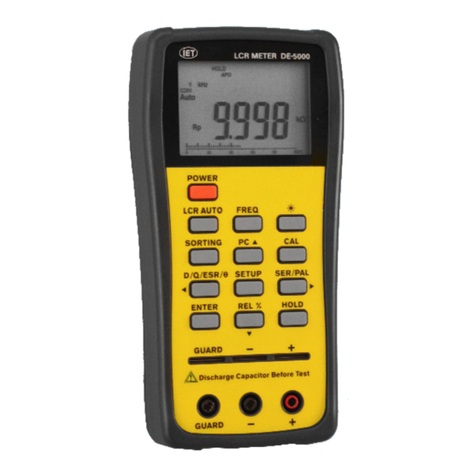
IET Labs
IET Labs DE-5000 Troubleshooting guide
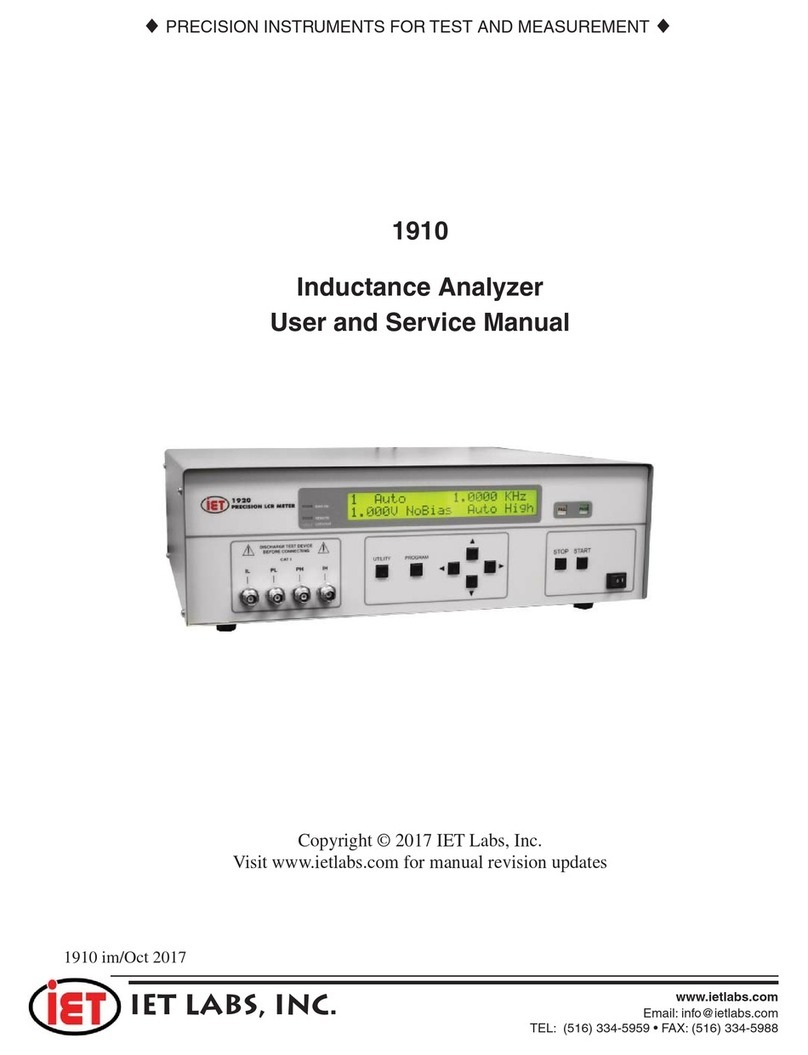
IET Labs
IET Labs 1910 Troubleshooting guide

IET Labs
IET Labs 1409 Series User manual
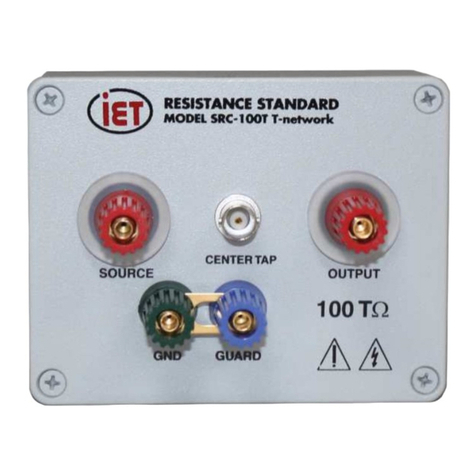
IET Labs
IET Labs SRC-10T-Tnetwork Troubleshooting guide
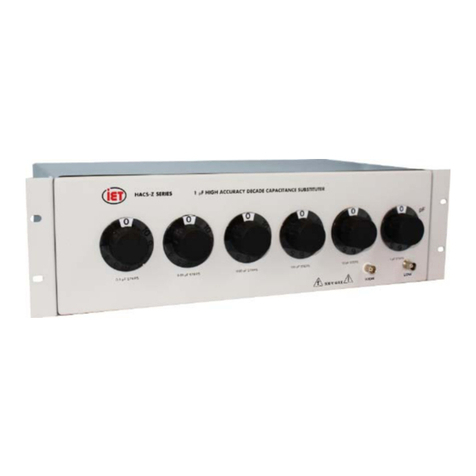
IET Labs
IET Labs HACS-Z-A-6E-1pF Troubleshooting guide
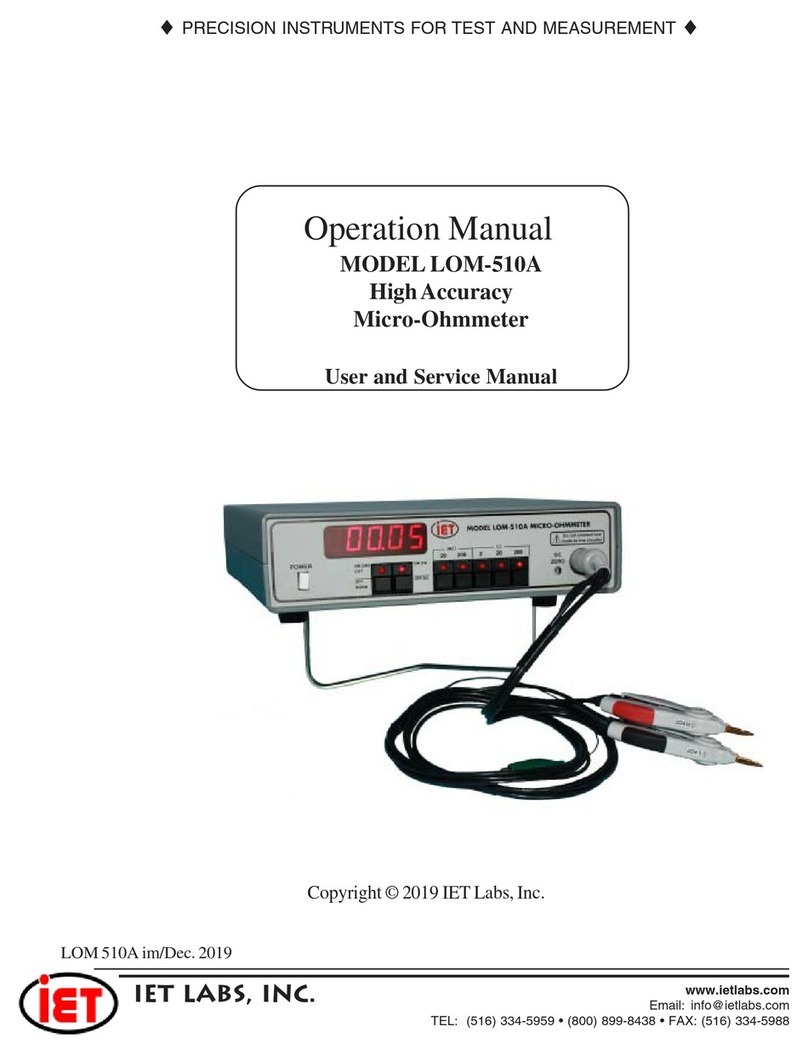
IET Labs
IET Labs LOM-510A User manual

IET Labs
IET Labs 1565-E Troubleshooting guide

IET Labs
IET Labs SCA Series User manual
